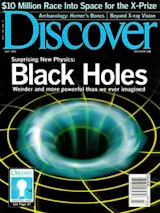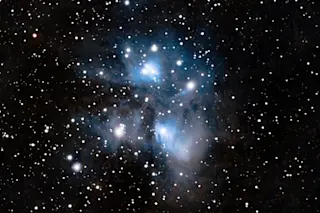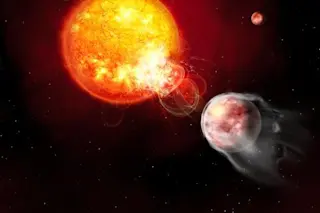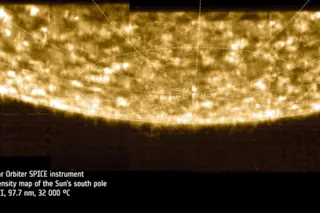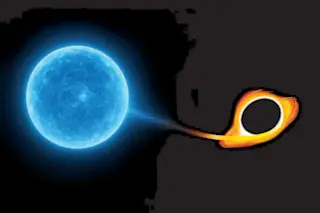In the heart of MCG-6-30-15, a galaxy 130 million light-years away,there is a hole. It's as big around as the orbit of Mars. Into thishole stars and star-stuff are always falling—a lot of stuff, theequivalent of a hundred million suns so far. From this hole nothing
escapes, not even light; it is perfectly black, like the mouth of along tunnel. If you were to get into a spaceship and put it into orbitaround this perfect blackness, you would find, once you got closeenough, and even before you started your final descent into darkness,that you were no longer in control. You would be swept along by anirresistible current, not of swirling gas or stardust but of space-timeitself.
That's because the black hole in MCG-6-30-15 is spinning. And as it spins, it drags space-time around with it.
No spaceship has been there to check it out, of course. And none ofthis is ...


